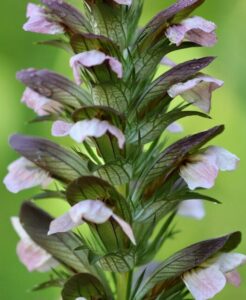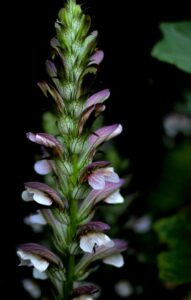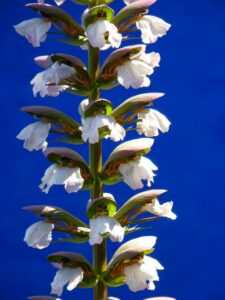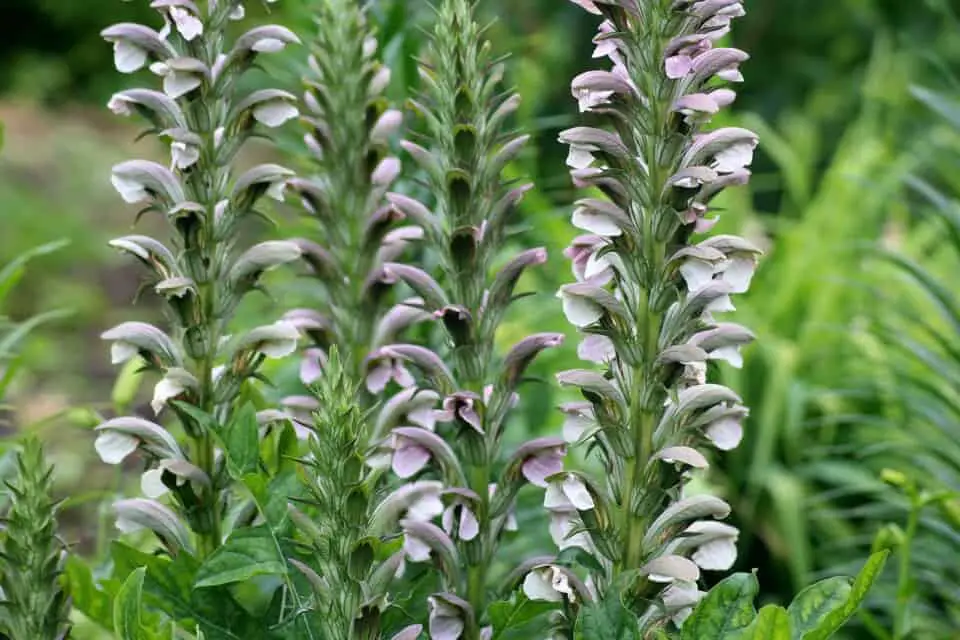Some links in the post are affiliate links and I get a commission from purchases made through some links found in the post.
The acanthus also goes by Bear’s Breeches or oyster plant. This plant, native to Southern Europe and the Mediterranean region, is surprisingly known for its foliage more than its leaves.
They feature a tall and striking nature which gardeners highly appreciate. In this article, I will refer to the plant as acanthus, which resembles its botanical name, acanthus mollis. So, can your plant grow in the shade?
Does Acanthus Grow in Shade?
 This plant grows up to 3 to 6 feet (0.9 to 1.8 meters) tall and 3 to 6 feet (0.9 to 1.8 meters) wide on average. However, this only happens when the plant is in the right growing conditions. Which are these?
This plant grows up to 3 to 6 feet (0.9 to 1.8 meters) tall and 3 to 6 feet (0.9 to 1.8 meters) wide on average. However, this only happens when the plant is in the right growing conditions. Which are these?
- It must be in rich and well-draining soil with a pH of 6.5 to 7.5: Soggy soils encourage root rot which can kill the plant. And nutrient-deficient soils reduce the food production rate and thus the plant’s growth.
- It must be in optimal growing zones between USDA zones 6 to 10, or the equivalent of these. These plants cannot withstand harsh winters and can die under such conditions.
- It must get enough water to support its growth: Ideally, one inch a week should be adequate. However, you should always alter the watering schedule to ensure the plant is well-watered.
If you follow these conditions, the plant should grow well and bloom towards the end of spring through to the mid of summer.
Its flowers, housed in purple bracts, come in a white hue and stand of 3-foot-long flower stalks. That is quite the sight!
Have you noticed I haven’t mentioned shade yet? Can your plant grow in the shade?
The acanthus is one of the easiest plants to care for and can do well in the shade. In this case, we will divide the shade into two:
1) Partial Shade
This term also refers to partial sun. Under such positioning, your plant would receive at least four hours of sun in the morning.
Usually, it’s best to place the acanthus towards the east of the garden to receive the morning rays that are gentler than those at noon or in the afternoon.
If this is not possible, you can place it near an object that can cast shade in the afternoon. Your acanthus can make enough food to sustain its growth using the limited access to the sun. Moreover, it can still bloom under these conditions.
2) Full Shade
You might think that full shade means that your acanthus would not have any access to sunlight. But that is not the case. Instead, it means that your plant would receive fewer than four hours of full sun in the day.
Say perhaps you place your acanthus to the east of your garden where it can receive 2 hours of morning sun before an obstruction bars its access.
That would be full shade. The same goes for if your acanthus grows under another plant that bars direct access to the sun.
In that case, it would receive dappled light for a few hours. The plant would still make enough food to grow even in these conditions.
So yes, your acanthus can grow in the shade, regardless of whether it is partial or full but the acanthus is a light loving plant. The more light it gets the more it flowers but in the shade the leaves will grow bigger and shinier.
Does Acanthus Need Sun?
 Besides mushrooms, you will rarely come across plants that can survive without sunlight. The acanthus only does well when it has at least a few hours of access to the sun.
Besides mushrooms, you will rarely come across plants that can survive without sunlight. The acanthus only does well when it has at least a few hours of access to the sun.
If you want the plant to do well, you should place it in the full sun. Such a location should receive unrestricted access to the sun for at least six hours between 10 and 4 pm.
This access allows the acanthus to photosynthesize, creating food to promote its growth and build its immune system. The plant can thus bloom well and is less susceptible to pests and diseases. Where can you achieve such light?
- In hot climates, you should position the acanthus towards the east of the garden: Ensure the plant does not have barriers that restrict its access to the morning sun such that it receives enough light from sunrise to about noon. Then install a barrier towards the west to allow the plant to remain shielded from the harsh afternoon sun.
- In cool climates, it is best to position the plant towards the south of the garden: Here, it will have enough access to the sun from morning to evening.
Your acanthus will always need some shielding when grown in hotter climates. But you should always ensure it gets enough sunlight to promote adequate food production.
Where Does Acanthus Grow Best?
The acanthus is a light-loving and shade-tolerant plant, allowing it to do well in various conditions. Thus, you can grow it in the following areas in your garden:
- Where there is bright and direct light (this is also known as full sun): Generally, this should be towards the south of the garden,
- Where the plant has access to bright and indirect light (also known as partial sun): This would be towards the east of the garden. Avoid the west as it receives harsh sun,
- Where the plant gets partial shade which would also be towards the east of the garden, and
- In full shade: This would be towards the north of the garden or under a tall plant that directs dappled light to the acanthus.
The best conditions depend on how hot or cool the climate in your region can be. If you live in hotter areas, opt for partial sun as it is less strenuous for the plant.
But if your climate is generally cool, you can grow the plant in the full sun. Partial and full shades are only ideal if you do not want to focus on blooming.
You may also like: Abelia vs spirea
Advantages And Disadvantages of Growing an Acanthus in The Shade
Choosing between growing the acanthus in the shade and the sun is not always easy. The following pointers can help you figure out what augurs with your goal.
Advantages
The acanthus can handle partial and full shade. And growing it in such conditions has the following perks:
- The soil does not lose much moisture to the environment like it would in the sun. So, you spend less time watering the plant,
- Most weeds do not grow well in the shade. You thus eliminate a significant percentage of weeds that would compete with the acanthus for nutrients. And you get to spend less on fertilizers because the acanthus can use what’s available in the soil.
- You can use shaded garden areas where other plants would not have grown, thus using your garden optimally.
Not bad, huh?
Disadvantages
 The biggest disadvantage to growing the acanthus in full shade is the reduced blooming. Flowering plants need access to sunlight for at least six hours a day to make enough food to sustain their growth and flowering.
The biggest disadvantage to growing the acanthus in full shade is the reduced blooming. Flowering plants need access to sunlight for at least six hours a day to make enough food to sustain their growth and flowering.
In the absence of sufficient light, the plant caters to its foliage production and puts flowering on the back burner.
Thus, if you want to enjoy flowering, it’s best to move the acanthus to partial shade, where it can make more food. Other issues you may face with growing the acanthus in full shade include:
- Stunted growth,
- The production of small leaves, and
- The soil may stay wet for too long.
Please note that these issues will likely arise when growing the acanthus in the full shade in cooler climates. So, if you live in a cold area, it’s best to work with partial shade or partial sun. Better yet, move the plant to the full sun.
Final Thoughts
The acanthus is a highly tolerant plant that does well with almost any kind of sun exposure. But when making a choice, consider your USDA zone.
The cooler your climate, the more sun the acanthus will need to thrive. Happy Gardening!

